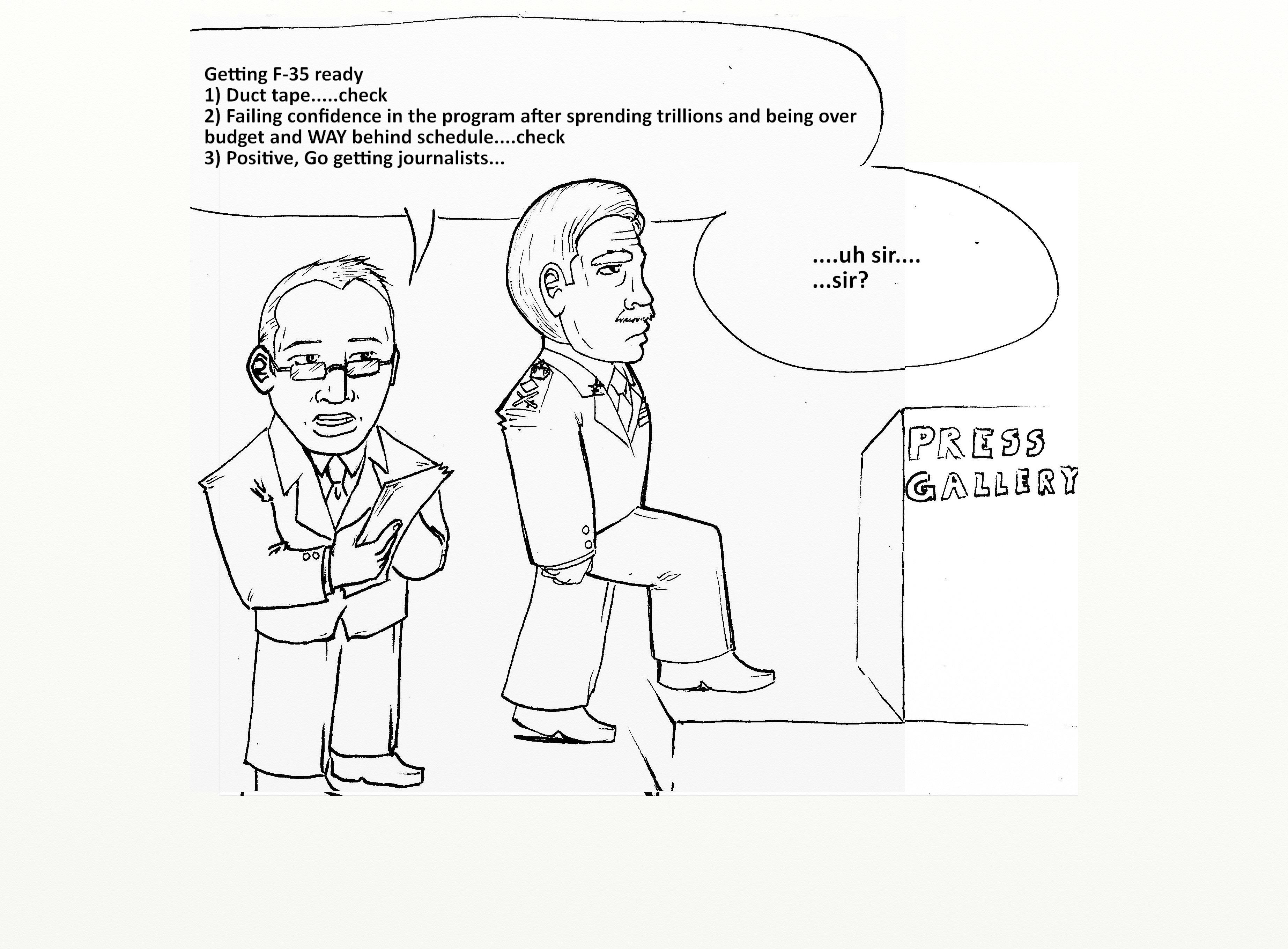22 August 2015 – Vancouver, CA
by Stewart Webb
News about the F-35 seems to be a daily reminder of how it has gone vastly awry. We are reminded that the F-35 has issues with its computer systems, engines, batteries, pilot helmet and so forth. It is rare though that any one discusses the opportunity/operational costs of adopting the F-35.
DefRep has examined and investigated issues with the F-35 several times. We decided that we would be outspoken when we have to be, but not over-zealous with bombarding our readership constantly. However, several developments have happened. One, the US Marine Corps stated that it is finally ready for combat. The other is a recent study conducted by the National Security Network, which states that the F-35 is inferior to near-peer competitors. This last study is not the first time that a study has been revealed the F-35 to be inferior and it will not be the last.
 But one should take stock that even elements of the USAF and other international air forces are coming forward with their criticisms. In fact, one of the more interesting assessments of the F-35, that I wholeheartedly suggest, is USAF Col Michael W. Pietrucha’s The Comanche and the Albatross: About Our Neck Was Hung. The report goes in-depth of how the USAF has divested from Close Air Support, Tactical Air Support and even Electronic Warfare (EW) in its pursuit of the F-22 and the F-35 and the shortfalls to come. In fact, Colonel Pietrucha’s article states that the USAF needs a multi-role, multi-plane air force that would be better adapt to changing circumstances and his model purportedly will save billions of dollars.
But one should take stock that even elements of the USAF and other international air forces are coming forward with their criticisms. In fact, one of the more interesting assessments of the F-35, that I wholeheartedly suggest, is USAF Col Michael W. Pietrucha’s The Comanche and the Albatross: About Our Neck Was Hung. The report goes in-depth of how the USAF has divested from Close Air Support, Tactical Air Support and even Electronic Warfare (EW) in its pursuit of the F-22 and the F-35 and the shortfalls to come. In fact, Colonel Pietrucha’s article states that the USAF needs a multi-role, multi-plane air force that would be better adapt to changing circumstances and his model purportedly will save billions of dollars.
The United States can afford to have multi-fleet option. However for other middle power countries, such Canada, Denmark and the Netherlands, can not afford to have a multi-fleet option. If they acquire the F-35, or another fighter jet, then they are in it for the life cycle of that plane. The notion of selling the F-35 to its close partners meant that the cost would decrease because of the principle of economies of scale.
Canada, for example, initial investment into the Joint Strike Fighter project was to make Canada an “informed member”. As Alan Williams, former AD-Materiel, has stated that was to keep Canada informed and so Canada’s aerospace industry could still maintain its cutting high technology edge. Unfortunately, politics in Canada made the F-35 the choice to replace Canada’s aging CF-18s. It has taken multiple reports from the Auditor General, the Parliamentary Budget Office, pressure from journalists, academics and the Canadian public for the government to reconsider its position. I will admit that I have been part of the opposition in Canada by penning a co-authored reports, and many op-eds in the national newspapers and a few media appearances about the F-35’s unsuitability.
A similar stance, that I have taken in the past, has been recently expressed by a group of retired Danish fighter pilots have come forward stating that Denmark should acquire the F-18 Super Hornet and not the F-35. The reasoning does not fall solely on high projected cost of the aircraft and the unproven technology that the F-35 boasts. The F-18 is a duel engined fighter jet, which also shares some of the high tech sensors and radar systems that the F-35 has. Even going back to Colonel Pietrucha’s article, he envies how the US Navy has continued its EW capacities by adopting the EA-18 Growler.
We operate in an alliance paradigm. It is unlikely that Canada or Denmark may invade a sovereign nation by itself within the life cycle of the next fighter jet fleet. Although the F-35 is shiny and new, it may not be the right aircraft for some countries. The United States can afford to take the chance of adding it into its inventory as the United States also has the largest air force in the world. Smaller countries need to be aware of the not only the cost of the F-35, but also the opportunity/operational costs that go with it. If we adopt different aircraft than the F-35 it is not game over, we will be able to complement each other operationally. And probably to Col Michael W. Pietrucha’s, and others like him, relief.
Feature Photo – F-35 press conference, Original Contribution done by (with much thanks) Nicholas Watkins, 2015
Inset Photo – Colonel Lionel Mandrake from Dr. Strangelove, Wikimedia Commons, 2015
Inset media – F-35 or F-18 Super Hornet: It’s really not that complicated, RaceRocks, Youtube, 2015
DefenceReport’s weekly recap is a multi-format blog that features opinions and insights from DefRep editorial staff and writers. The opinions expressed here are the author’s own and are separate from DefRep reports, which are based on independent and objective reporting.


